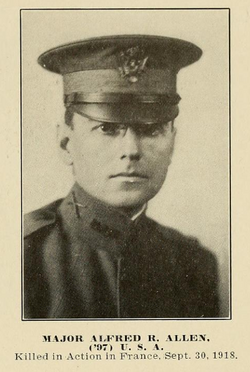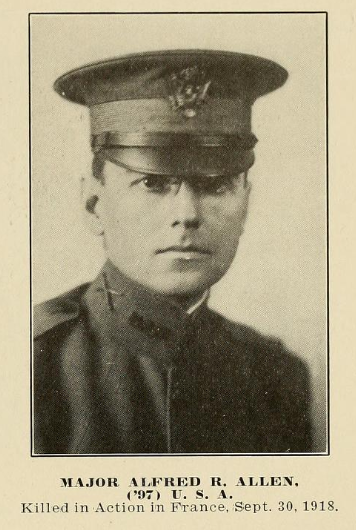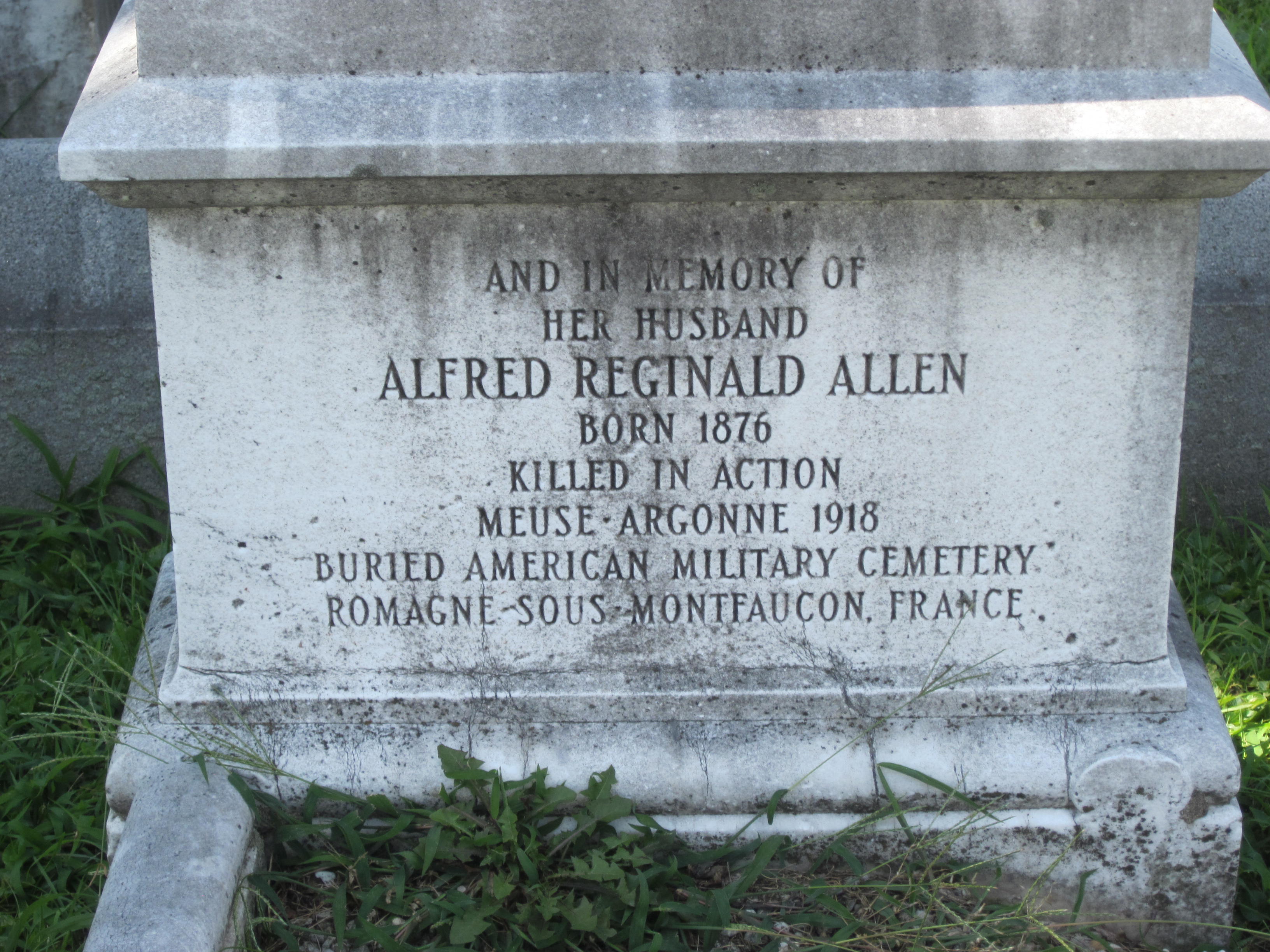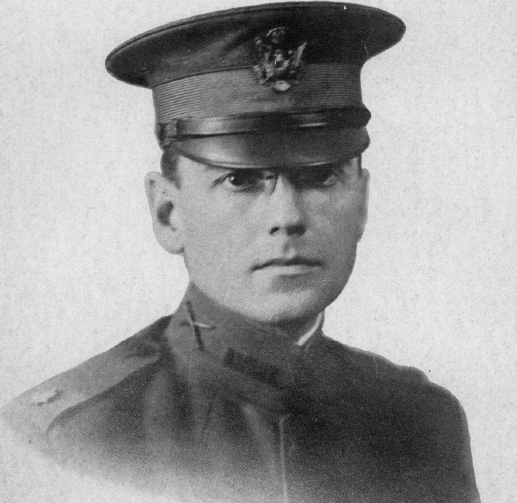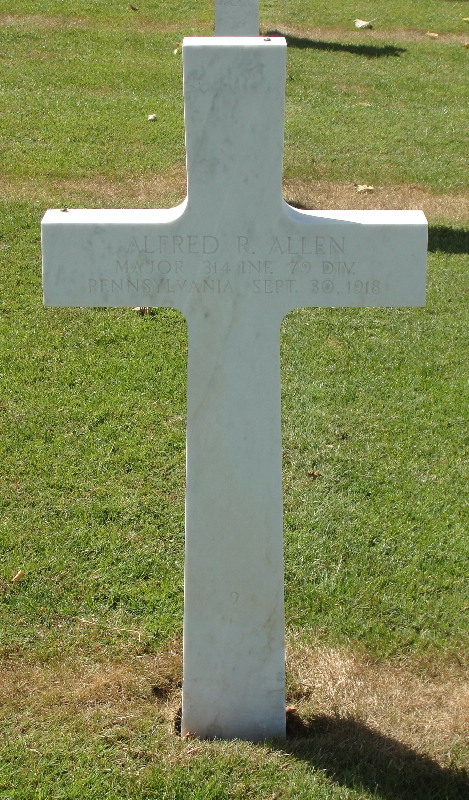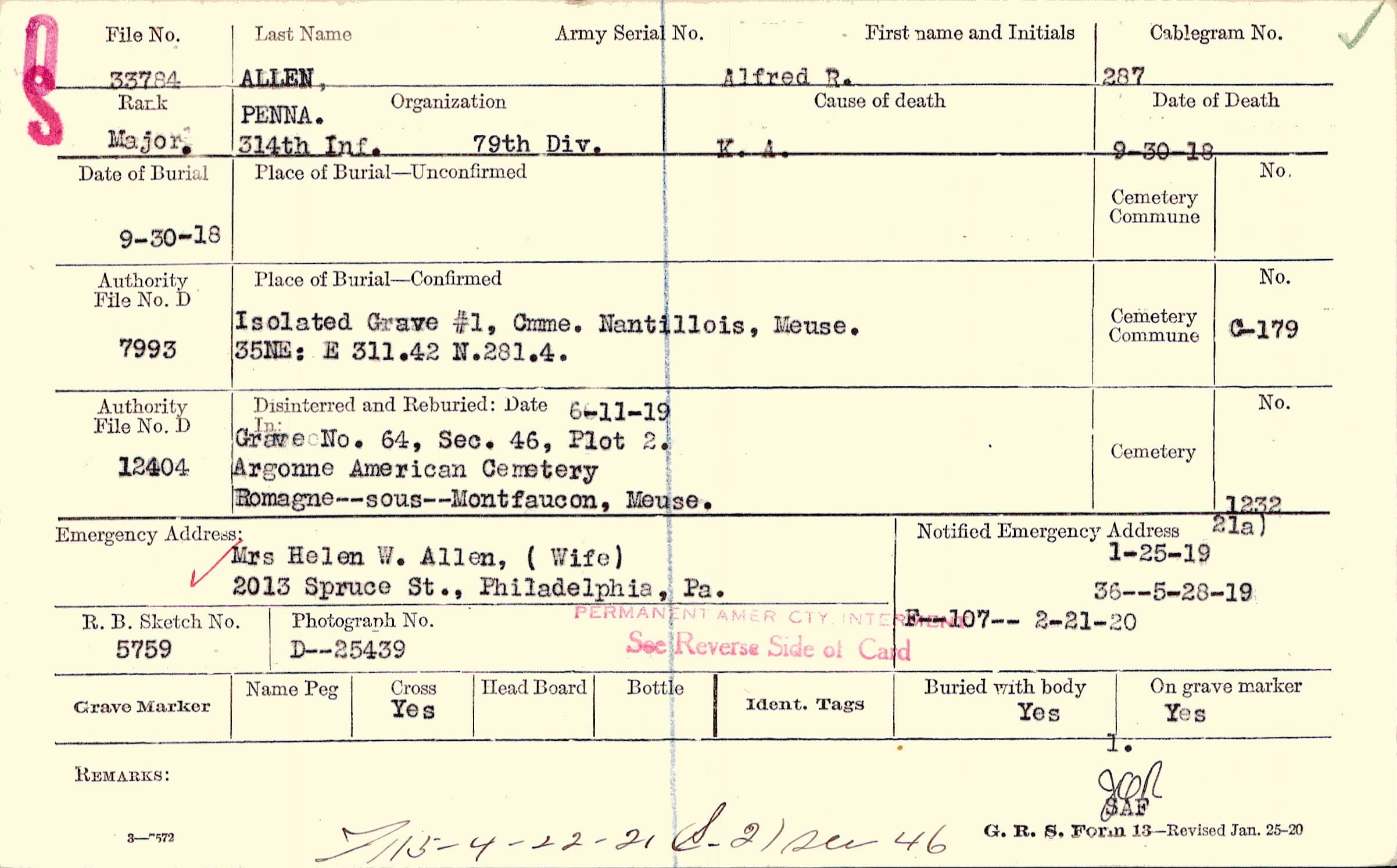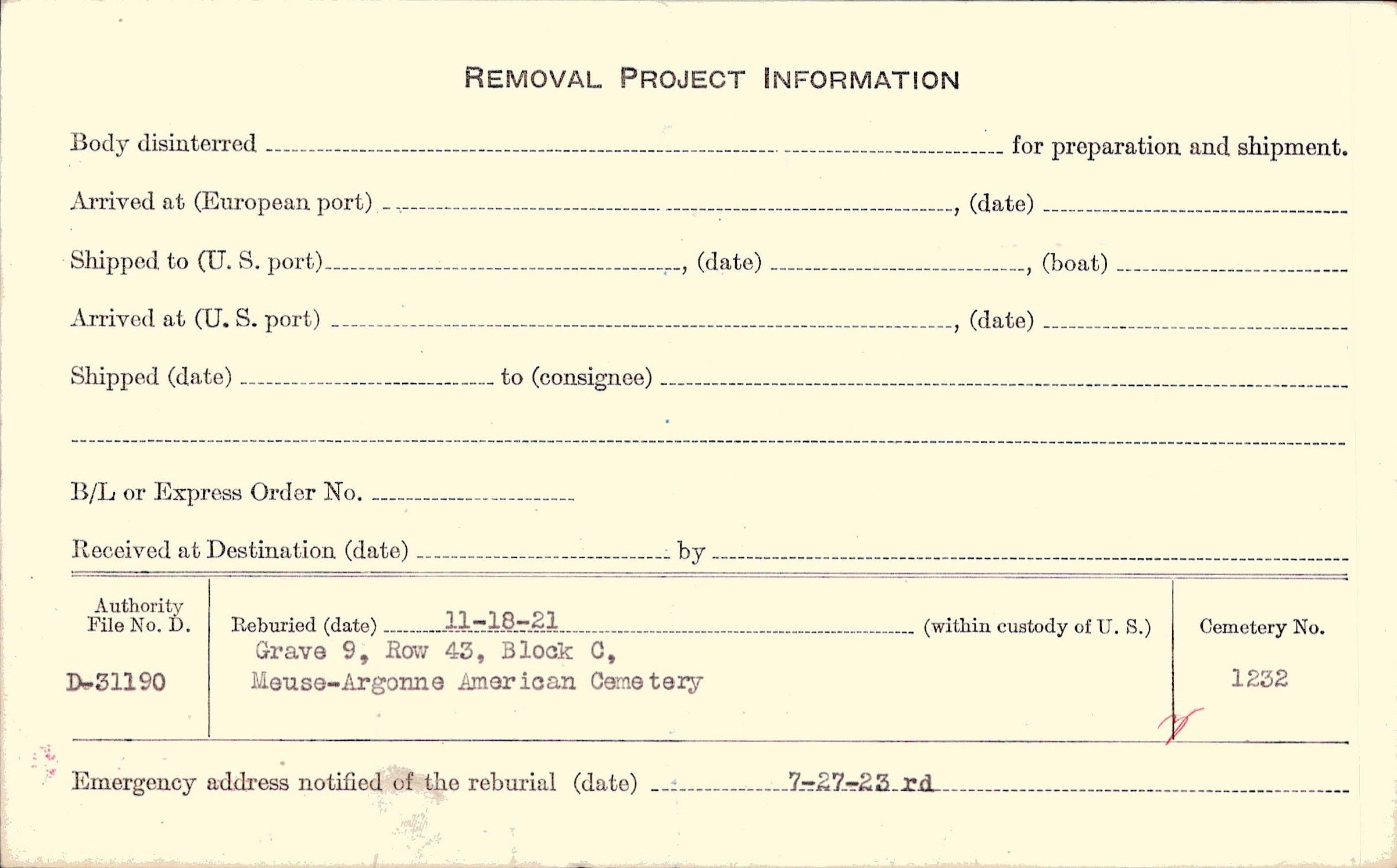Allen's preparatory education was at Selwin Hall, near Reading, Pa. He was a student at Lehigh University in 1893 and 1894, and graduated in medicine at the University of Pennsylvania in 1898. He married on Jan. 21, 1904, Helen, daughter of E. Burgess and Emma (Bolton) Warren. His wife survives him and he leaves two children, Alfred Reginald Allen, Jr., and Helen Warren Allen, twins, born March 22, 1905. For several years after his graduation, Allen was associated as personal and hospital assistant with the late Dr. S. Weir Mitchell. He was held in high esteem by Dr. Mitchell, from whom he received his first impulse to the pursuit of neurology. In 1905, Allen engaged in pathologic research in the laboratory of neuropathology of the University of Pennsylvania. In the following year he became formally connected with the neurological staff of the University Medical School. From 1907-1911 he was instructor in neurology and neuropathology; from 1907, assistant neurologist to the University Hospital; from 1908 until the time of his death, one of the chiefs of clinic of the neurological department, and from 1911, associate in neurology and neuropathology. For several years he was assistant neurologist to the Philadelphia General Hospital. Allen was a fellow of the College of Physicians of Philadelphia; and was a member of the Philadelphia Neurological Society, of which he was secretary in 1908 and 1909, and president in 1910. He was a member of the American Neurological Association, of which he was secretary and treasurer, 1909-1917. He was one of the original members of the American Psychopathological Association, of which he was president, 1914 and 1915. As secretary of the United States delegation, he attended the Sixteenth International Medical Congress at Budapest in 1909, and in the same capacity the Seventeenth International Medical Congress at London in 1913.
In the Philadelphia Postgraduate School of Neurology, Allen gave several courses of instruction on neurophysiology at his rooms in the medical laboratories of the University of Pennsylvania. This instruction, which was both didactic and demonstrative, was highly appreciated by the students in attendance. The neurologic contributions of Allen were chiefly published within a period of ten years, from 1905 to 1914. While not numerous, they were valuable, and illustrated his ability as a clinician, his technical proficiency with the microscope, and the initiative of a mind always alert and progressive. His first noteworthy neurologic paper, on "Combined Pseudosystemic Disease, with Special Reference to Annular Degeneration," was published in the University of Pennsylvania Medical Bulletin, January, 1905. This and nearly all his other writings are to be found in the series of "Contributions from the Department of Neurology and Laboratory of Neuropathology of the University of Pennsylvania," these volumes being made up largely of reprints of articles published by members of the department in medical journals. In this paper he first discusses the centripetal and centrifugal blood supply of the spinal cord, and then presents in careful detail a clinical history, and the results of his examinations and histologie investigation. His conclusions favor the theory of the vascular origin of such well known spinal affections as the various forms of poliomyelitis, Friedreich's ataxia, disseminated sclerosis, paralysis agitans and tabes dorsalis. A second article entitled "The Connective Tissue Character of the Septa of the Spinal Cord as Studied by a New Stain," appeared in the Journal of Nervous and Mental Disease, December, 1906. This paper is brief and is chiefly valuable as showing the tendency of the author to reach out into new fields. By means of the stain, the use of which is clearly described, Allen was able to demonstrate the fact that the posterior median septum of the spinal cord, as well as a number of the septa of the lateral columns, contain connective tissue which is continuous with the pia. A third paper written in collaboration with Dr. William G. Spiller was published both in the University of Pennsylvania Medical Bulletin, March-April, 1907, and in The Journal of the American Medical Association, April 13, 1907. The subject was "Internal Hydrocephalus, with the Report of Two Cases, One Resulting from Occlusion of the Aqueduct of Sylvius." In this contribution, after an excellent summary of the literature of the subject, microscopic and macroscopic reports of two interesting cases are given.
In 1907, the "Contributions of the Department of Neurology and Laboratory of Neuropathology" contained an article prepared in collaboration with the writer on "Two Cases of the Polyneuritic Psychosis with Necropsies and Microscopical Findings." This paper was read at the sixty-third annual meeting of the American Medico-Psychological Association, Washington, D. C, May 7-10, 1907. It was, in the main, a study of the probable etiology and pathology of Korsakoff's disease, and it contained brief references to other contributions. A careful anatomic study was incorporated in a paper by Allen on the "Distribution of the Motor Root in the Anterior Horn," University of Pennsylvania Medical Bulletin, November, 1907. Elsewhere I shall speak of Allen's ability as a musician and student of harmony. In one of his papers he applies this gift in describing "A New Diagnostic Sign in Recurrent Laryngeal Paralysis," Journal of Nervous and Mental Disease, 1908. The development of the sign was dependent on an observation of Allen that when the laryngeal paralysis was unilateral there was a very material difference in the upward excursion of pitch, if the vocal apparatus was stimulated electrically during the singing of a tone. The sign, as the author indicates, is of curious interest rather than of wide practical application. One of Allen's most elaborate papers was that on "Injuries of the Spinal Cord," University of Pennsylvania Medical Bulletin, April, 1908. It covered between thirty and forty pages, and was profusely illustrated with photographs of gross specimens and photomicrographs. These illustrations, which represent some of the best work of the kind in the literature of neurology, indicate by their remarkable quality Allen's skill in photography.
The following is a list of other papers published by Allen between 1908 and 1914: "The Symptom-Complex of Transverse Lesions of the Spinal Cord and Its Relation to Structural Changes Therein," American Journal of the Medical Sciences, May, 1908. "Delayed Apoplexy (Spätapoplexie), with the Report of a Case," "Contributions from the Department of Neurology and Laboratory of Neuropathology, University of Pennsylvania," 1908. "Hemorrhage into the Ventricles, Its Relations to Convulsions and Rigidity in Apoplectiform Hemiplegia," The Journal of the American Medical Association, July 18, 1908. "Special Features Concerning Multiple Neuritis," University of Pennsylvania Medical Bulletin, November, 1909. "Concussion of the Brain," The Journal of the American Medical Association, September 10, 1910. "The Histopathology of the Preparalytic Stage of Acute Anterior Poliomyelitis," Pennsylvania Medical Journal, December, 1911. "Surgery of Experimental Lesions of Spinal Cord Equivalent to Crush Injury of Fracture Dislocation of Spinal Column (Preliminary Report)," The Journal of the American Medical Association, September 9, 1911. "The Effect of the Removal of the Hypophysis in the Dog," written in collaboration with Dr. Joshua Edwin Sweet, Annals of Surgery, April, 1913. "Remarks on the Histopathological Changes in the Spinal Cord Due to Impact," Journal of Nervous and Mental Disease, March, 1914.
These articles all contain material worthy of record, and some of them are especially notable, as for instance, those on delayed apoplexy, hemorrhage into the ventricles, on the surgery of experimental lesions of the spinal cord, on the histopathologic changes in the spinal cord due to impact, and the effect of the removal of the hypophysis.
As the result of the investigations incorporated in his papers on spinal crush injuries and on the histopathologic changes in the spinal cord due to impact, Allen suggested an early operative procedure in severe spinal traumatisms, which was afterward put into successful practical application by Dr. C. H. Frazier. This consisted in a median longitudinal incision directly through the injured area of the cord. The physiology of the beneficial action of this incision was ascribed by Allen "to a draining of the cord at this point of blood and serum, and thereby not only preventing the pressure of this exúdate on the nerve elements, but also removing what would in time, through chemical change, give rise to a biochemical irritation with destruction of tissue."
During Allen's stay in England in 1913, he did some laboratory work on the cerebellum. He again took up cerebellar research after his return to this country, but this work was interrupted by the war. Besides the contributions of Allen thus hastily summarized, he delivered able presidential addresses on some phases of psychoanalysis before the American Psychopathological Association and the Philadelphia Neurological Society. Allen collaborated with Dr. Charles H. Frazier in the production of his work on "The Surgery of the Spine and Spinal Cord," published in 1918. For this book he wrote an excellent chapter on the "Normal and Pathological Physiology of the Spinal Cord," and in other ways was associated with Dr. Frazier in the preparation of the volume. Allen was a lover of music and a close student of harmony. When very young he composed an opera, both words and music. He was the author of many songs, some church music and an overture. He organized the Savoy Opera Company for the amateur production of Gilbert and Sullivan's operas. This company gave as its first performance "Trial by Jury," in May, 1901, and is still successfully producing a Gilbert and Sullivan opera each year. During his active connection with the company Allen trained all the cast and chorus, and conducted the orchestra. He wrote the music for a Christmas carol, the words for which were furnished by the Rev. Louis F. Benson. He also wrote the music for one of the hymns of the war hymn-book entitled "For God and Country." Allen was the musical editor of the revised edition of "The Hymnal," of which Dr. Benson was the editor-in-chief. "The Hymnal" was published by authority of the General Assembly of the Presbyterian Church in the United States, 1911. Allen's duties as musical editor were to revise the harmonies of the tunes, a work for which he was peculiarly well fitted. He wrote for the hymnal several new hymn tunes and several chants. Although Allen never took a lesson on the piano, his knowledge of the theory of music and his natural musical gifts were such that he could play with ease, fluency and grace. He was also an excellent violinist. Among Allen's many gifts was that for languages. He was an earnest student of the origin of languages and had much facility in acquiring a language, for the purposes of speaking and reading it. It was said of him by one who knew him well that "he thought no more of studying a new language than a lawyer of undertaking a new case." This facility was assisted by his powers of concentration on any subject which he had in hand. He was an industrious collector of books on languages. During his travels abroad in Belgium, Holland, France, Germany and Italy, he was in the habit of getting the schoolbooks of the places visited, studying by their aid the history, features and customs of the countries through which he was traveling. As illustrating his powers of concentration, one of his intimate friends writes:"This was shown by his enthusiastic work in higher mathematics which he developed under the stress of coming into contact with the problems of modern gunnery, thus promoting an efficiency in that department, which enabled him to become the commandant of the Infantry School of Arms, a position which he held for a short time." "Perhaps the quality in Major Allen's mental constitution that most impressed a fellow student," says the same friend, "was the great width and variety of his accomplishments, each one of them pursued with so much intensity and yet at the same time made to cohere and co-operate by the perfect sanity of his mind and the catholicity of his interests. He was at once absorbed in the particular work that employed him, but with a mind so disciplined that not only every pursuit but every fact was kept in its own pigeon-hole, and he himself was able to pass from one to another with the least possible mental friction." Allen was a skilful photographer and a good pen-and-ink draftsman. At one period he acted as photomicrographer at the medical laboratories of the University of Pennsylvania, producing work of much technical excellence for publications issued by some of the departments. His own papers were sometimes illustrated by original photographs and drawings of unusual merit. Besides his medical photography, Allen did fine work in general photography. When the writer of this article was engaged in a local historical research, covering a district of Philadelphia, Allen sometimes accompanied him on his trips, taking beautiful landscape and other photographs. From the time when, in 1914, Belgium was invaded, Allen had a strong feeling that it was his duty to serve the cause of liberty against German aggression. When the training camp was organized at Plattsburg, N.Y., he was one of the first to go there. He went in August and September, 1915, and again in August and September of the following year. During his stay at Plattsburg he was commissioned first lieutenant in the reserve corps, and in October, 1916, was commissioned major. After war was declared he was ordered to the training camp at Fort Niagara, where he spent the summer of 1917. In the fall of 1917, he was transferred to Camp Meade, Md., where he remained a short time and then was sent to the training school at Fort Sill, Okla. He returned to Camp Meade where he became director and, for a short time, commandant of the School of Automatic Arms in the Infantry School of Arms of the Seventy-Ninth Division. He was made major of the 314th United States Infantry and arrived in France with his regiment in July, 1918, which was in a brigade commanded by Brigadier-General Nicholson, being a part of the Seventy-Ninth Division under the command of Major-General Joseph E. Kuhn. The division was a part of the Fifth Army Corps of the First American Army. All his military duties were faithfully and efficiently rendered, and he was beloved alike by the officers and men of his battalion.
His family erected a cenotaph for him in Section K, Lot 32 of Laurel Hill Cemetery, Philadelphia, Pennsylvania.
Allen's preparatory education was at Selwin Hall, near Reading, Pa. He was a student at Lehigh University in 1893 and 1894, and graduated in medicine at the University of Pennsylvania in 1898. He married on Jan. 21, 1904, Helen, daughter of E. Burgess and Emma (Bolton) Warren. His wife survives him and he leaves two children, Alfred Reginald Allen, Jr., and Helen Warren Allen, twins, born March 22, 1905. For several years after his graduation, Allen was associated as personal and hospital assistant with the late Dr. S. Weir Mitchell. He was held in high esteem by Dr. Mitchell, from whom he received his first impulse to the pursuit of neurology. In 1905, Allen engaged in pathologic research in the laboratory of neuropathology of the University of Pennsylvania. In the following year he became formally connected with the neurological staff of the University Medical School. From 1907-1911 he was instructor in neurology and neuropathology; from 1907, assistant neurologist to the University Hospital; from 1908 until the time of his death, one of the chiefs of clinic of the neurological department, and from 1911, associate in neurology and neuropathology. For several years he was assistant neurologist to the Philadelphia General Hospital. Allen was a fellow of the College of Physicians of Philadelphia; and was a member of the Philadelphia Neurological Society, of which he was secretary in 1908 and 1909, and president in 1910. He was a member of the American Neurological Association, of which he was secretary and treasurer, 1909-1917. He was one of the original members of the American Psychopathological Association, of which he was president, 1914 and 1915. As secretary of the United States delegation, he attended the Sixteenth International Medical Congress at Budapest in 1909, and in the same capacity the Seventeenth International Medical Congress at London in 1913.
In the Philadelphia Postgraduate School of Neurology, Allen gave several courses of instruction on neurophysiology at his rooms in the medical laboratories of the University of Pennsylvania. This instruction, which was both didactic and demonstrative, was highly appreciated by the students in attendance. The neurologic contributions of Allen were chiefly published within a period of ten years, from 1905 to 1914. While not numerous, they were valuable, and illustrated his ability as a clinician, his technical proficiency with the microscope, and the initiative of a mind always alert and progressive. His first noteworthy neurologic paper, on "Combined Pseudosystemic Disease, with Special Reference to Annular Degeneration," was published in the University of Pennsylvania Medical Bulletin, January, 1905. This and nearly all his other writings are to be found in the series of "Contributions from the Department of Neurology and Laboratory of Neuropathology of the University of Pennsylvania," these volumes being made up largely of reprints of articles published by members of the department in medical journals. In this paper he first discusses the centripetal and centrifugal blood supply of the spinal cord, and then presents in careful detail a clinical history, and the results of his examinations and histologie investigation. His conclusions favor the theory of the vascular origin of such well known spinal affections as the various forms of poliomyelitis, Friedreich's ataxia, disseminated sclerosis, paralysis agitans and tabes dorsalis. A second article entitled "The Connective Tissue Character of the Septa of the Spinal Cord as Studied by a New Stain," appeared in the Journal of Nervous and Mental Disease, December, 1906. This paper is brief and is chiefly valuable as showing the tendency of the author to reach out into new fields. By means of the stain, the use of which is clearly described, Allen was able to demonstrate the fact that the posterior median septum of the spinal cord, as well as a number of the septa of the lateral columns, contain connective tissue which is continuous with the pia. A third paper written in collaboration with Dr. William G. Spiller was published both in the University of Pennsylvania Medical Bulletin, March-April, 1907, and in The Journal of the American Medical Association, April 13, 1907. The subject was "Internal Hydrocephalus, with the Report of Two Cases, One Resulting from Occlusion of the Aqueduct of Sylvius." In this contribution, after an excellent summary of the literature of the subject, microscopic and macroscopic reports of two interesting cases are given.
In 1907, the "Contributions of the Department of Neurology and Laboratory of Neuropathology" contained an article prepared in collaboration with the writer on "Two Cases of the Polyneuritic Psychosis with Necropsies and Microscopical Findings." This paper was read at the sixty-third annual meeting of the American Medico-Psychological Association, Washington, D. C, May 7-10, 1907. It was, in the main, a study of the probable etiology and pathology of Korsakoff's disease, and it contained brief references to other contributions. A careful anatomic study was incorporated in a paper by Allen on the "Distribution of the Motor Root in the Anterior Horn," University of Pennsylvania Medical Bulletin, November, 1907. Elsewhere I shall speak of Allen's ability as a musician and student of harmony. In one of his papers he applies this gift in describing "A New Diagnostic Sign in Recurrent Laryngeal Paralysis," Journal of Nervous and Mental Disease, 1908. The development of the sign was dependent on an observation of Allen that when the laryngeal paralysis was unilateral there was a very material difference in the upward excursion of pitch, if the vocal apparatus was stimulated electrically during the singing of a tone. The sign, as the author indicates, is of curious interest rather than of wide practical application. One of Allen's most elaborate papers was that on "Injuries of the Spinal Cord," University of Pennsylvania Medical Bulletin, April, 1908. It covered between thirty and forty pages, and was profusely illustrated with photographs of gross specimens and photomicrographs. These illustrations, which represent some of the best work of the kind in the literature of neurology, indicate by their remarkable quality Allen's skill in photography.
The following is a list of other papers published by Allen between 1908 and 1914: "The Symptom-Complex of Transverse Lesions of the Spinal Cord and Its Relation to Structural Changes Therein," American Journal of the Medical Sciences, May, 1908. "Delayed Apoplexy (Spätapoplexie), with the Report of a Case," "Contributions from the Department of Neurology and Laboratory of Neuropathology, University of Pennsylvania," 1908. "Hemorrhage into the Ventricles, Its Relations to Convulsions and Rigidity in Apoplectiform Hemiplegia," The Journal of the American Medical Association, July 18, 1908. "Special Features Concerning Multiple Neuritis," University of Pennsylvania Medical Bulletin, November, 1909. "Concussion of the Brain," The Journal of the American Medical Association, September 10, 1910. "The Histopathology of the Preparalytic Stage of Acute Anterior Poliomyelitis," Pennsylvania Medical Journal, December, 1911. "Surgery of Experimental Lesions of Spinal Cord Equivalent to Crush Injury of Fracture Dislocation of Spinal Column (Preliminary Report)," The Journal of the American Medical Association, September 9, 1911. "The Effect of the Removal of the Hypophysis in the Dog," written in collaboration with Dr. Joshua Edwin Sweet, Annals of Surgery, April, 1913. "Remarks on the Histopathological Changes in the Spinal Cord Due to Impact," Journal of Nervous and Mental Disease, March, 1914.
These articles all contain material worthy of record, and some of them are especially notable, as for instance, those on delayed apoplexy, hemorrhage into the ventricles, on the surgery of experimental lesions of the spinal cord, on the histopathologic changes in the spinal cord due to impact, and the effect of the removal of the hypophysis.
As the result of the investigations incorporated in his papers on spinal crush injuries and on the histopathologic changes in the spinal cord due to impact, Allen suggested an early operative procedure in severe spinal traumatisms, which was afterward put into successful practical application by Dr. C. H. Frazier. This consisted in a median longitudinal incision directly through the injured area of the cord. The physiology of the beneficial action of this incision was ascribed by Allen "to a draining of the cord at this point of blood and serum, and thereby not only preventing the pressure of this exúdate on the nerve elements, but also removing what would in time, through chemical change, give rise to a biochemical irritation with destruction of tissue."
During Allen's stay in England in 1913, he did some laboratory work on the cerebellum. He again took up cerebellar research after his return to this country, but this work was interrupted by the war. Besides the contributions of Allen thus hastily summarized, he delivered able presidential addresses on some phases of psychoanalysis before the American Psychopathological Association and the Philadelphia Neurological Society. Allen collaborated with Dr. Charles H. Frazier in the production of his work on "The Surgery of the Spine and Spinal Cord," published in 1918. For this book he wrote an excellent chapter on the "Normal and Pathological Physiology of the Spinal Cord," and in other ways was associated with Dr. Frazier in the preparation of the volume. Allen was a lover of music and a close student of harmony. When very young he composed an opera, both words and music. He was the author of many songs, some church music and an overture. He organized the Savoy Opera Company for the amateur production of Gilbert and Sullivan's operas. This company gave as its first performance "Trial by Jury," in May, 1901, and is still successfully producing a Gilbert and Sullivan opera each year. During his active connection with the company Allen trained all the cast and chorus, and conducted the orchestra. He wrote the music for a Christmas carol, the words for which were furnished by the Rev. Louis F. Benson. He also wrote the music for one of the hymns of the war hymn-book entitled "For God and Country." Allen was the musical editor of the revised edition of "The Hymnal," of which Dr. Benson was the editor-in-chief. "The Hymnal" was published by authority of the General Assembly of the Presbyterian Church in the United States, 1911. Allen's duties as musical editor were to revise the harmonies of the tunes, a work for which he was peculiarly well fitted. He wrote for the hymnal several new hymn tunes and several chants. Although Allen never took a lesson on the piano, his knowledge of the theory of music and his natural musical gifts were such that he could play with ease, fluency and grace. He was also an excellent violinist. Among Allen's many gifts was that for languages. He was an earnest student of the origin of languages and had much facility in acquiring a language, for the purposes of speaking and reading it. It was said of him by one who knew him well that "he thought no more of studying a new language than a lawyer of undertaking a new case." This facility was assisted by his powers of concentration on any subject which he had in hand. He was an industrious collector of books on languages. During his travels abroad in Belgium, Holland, France, Germany and Italy, he was in the habit of getting the schoolbooks of the places visited, studying by their aid the history, features and customs of the countries through which he was traveling. As illustrating his powers of concentration, one of his intimate friends writes:"This was shown by his enthusiastic work in higher mathematics which he developed under the stress of coming into contact with the problems of modern gunnery, thus promoting an efficiency in that department, which enabled him to become the commandant of the Infantry School of Arms, a position which he held for a short time." "Perhaps the quality in Major Allen's mental constitution that most impressed a fellow student," says the same friend, "was the great width and variety of his accomplishments, each one of them pursued with so much intensity and yet at the same time made to cohere and co-operate by the perfect sanity of his mind and the catholicity of his interests. He was at once absorbed in the particular work that employed him, but with a mind so disciplined that not only every pursuit but every fact was kept in its own pigeon-hole, and he himself was able to pass from one to another with the least possible mental friction." Allen was a skilful photographer and a good pen-and-ink draftsman. At one period he acted as photomicrographer at the medical laboratories of the University of Pennsylvania, producing work of much technical excellence for publications issued by some of the departments. His own papers were sometimes illustrated by original photographs and drawings of unusual merit. Besides his medical photography, Allen did fine work in general photography. When the writer of this article was engaged in a local historical research, covering a district of Philadelphia, Allen sometimes accompanied him on his trips, taking beautiful landscape and other photographs. From the time when, in 1914, Belgium was invaded, Allen had a strong feeling that it was his duty to serve the cause of liberty against German aggression. When the training camp was organized at Plattsburg, N.Y., he was one of the first to go there. He went in August and September, 1915, and again in August and September of the following year. During his stay at Plattsburg he was commissioned first lieutenant in the reserve corps, and in October, 1916, was commissioned major. After war was declared he was ordered to the training camp at Fort Niagara, where he spent the summer of 1917. In the fall of 1917, he was transferred to Camp Meade, Md., where he remained a short time and then was sent to the training school at Fort Sill, Okla. He returned to Camp Meade where he became director and, for a short time, commandant of the School of Automatic Arms in the Infantry School of Arms of the Seventy-Ninth Division. He was made major of the 314th United States Infantry and arrived in France with his regiment in July, 1918, which was in a brigade commanded by Brigadier-General Nicholson, being a part of the Seventy-Ninth Division under the command of Major-General Joseph E. Kuhn. The division was a part of the Fifth Army Corps of the First American Army. All his military duties were faithfully and efficiently rendered, and he was beloved alike by the officers and men of his battalion.
His family erected a cenotaph for him in Section K, Lot 32 of Laurel Hill Cemetery, Philadelphia, Pennsylvania.
Inscription
MAJOR 314 INF. 79 DIV. PENNSYLVANIA
Family Members
Sponsored by Ancestry
Advertisement
Advertisement
